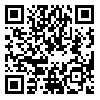BibTeX | RIS | EndNote | Medlars | ProCite | Reference Manager | RefWorks
Send citation to:
URL: http://rjms.iums.ac.ir/article-1-2898-en.html

 , Sadaf Esfahani
, Sadaf Esfahani 
 , Sara Samavati
, Sara Samavati 
 , Hassan Otukesh
, Hassan Otukesh 
 , Rozita Hoseini
, Rozita Hoseini 
 , Arash Javadmoosavi
, Arash Javadmoosavi 

PURPOSE: In our study, we evaluated retrospectively the efficacy of extracorporeal shock wave lithotripsy (ESWL) in the treatment of ureteral stones in children. MATERIALS AND METHODS: Between the dates of 2005-2010, 200 children who were applied ESWL due to the ureteral stone in our Clinic and consisted of 103 boys and 97 girls whose mean age was 7.9 ± 3.9 were evaluated. The sizes of the stones were 4 to 27 mm. ESWL was performed in the supine position for upper ureteral stones, in the supine/prone position for middle and lower ureteral stones. RESULTS: Stone-free rate was determined as 85% in three-month follow-up of the patients. Re-treatment was done at 15% of the patients. There was not any serious complication at any of the patients. CONCLUSIONS: According to these findings ESWL with its high stone-free rates and negligible complications is the first method to be refered in the treatment of ureteral stones in children.



